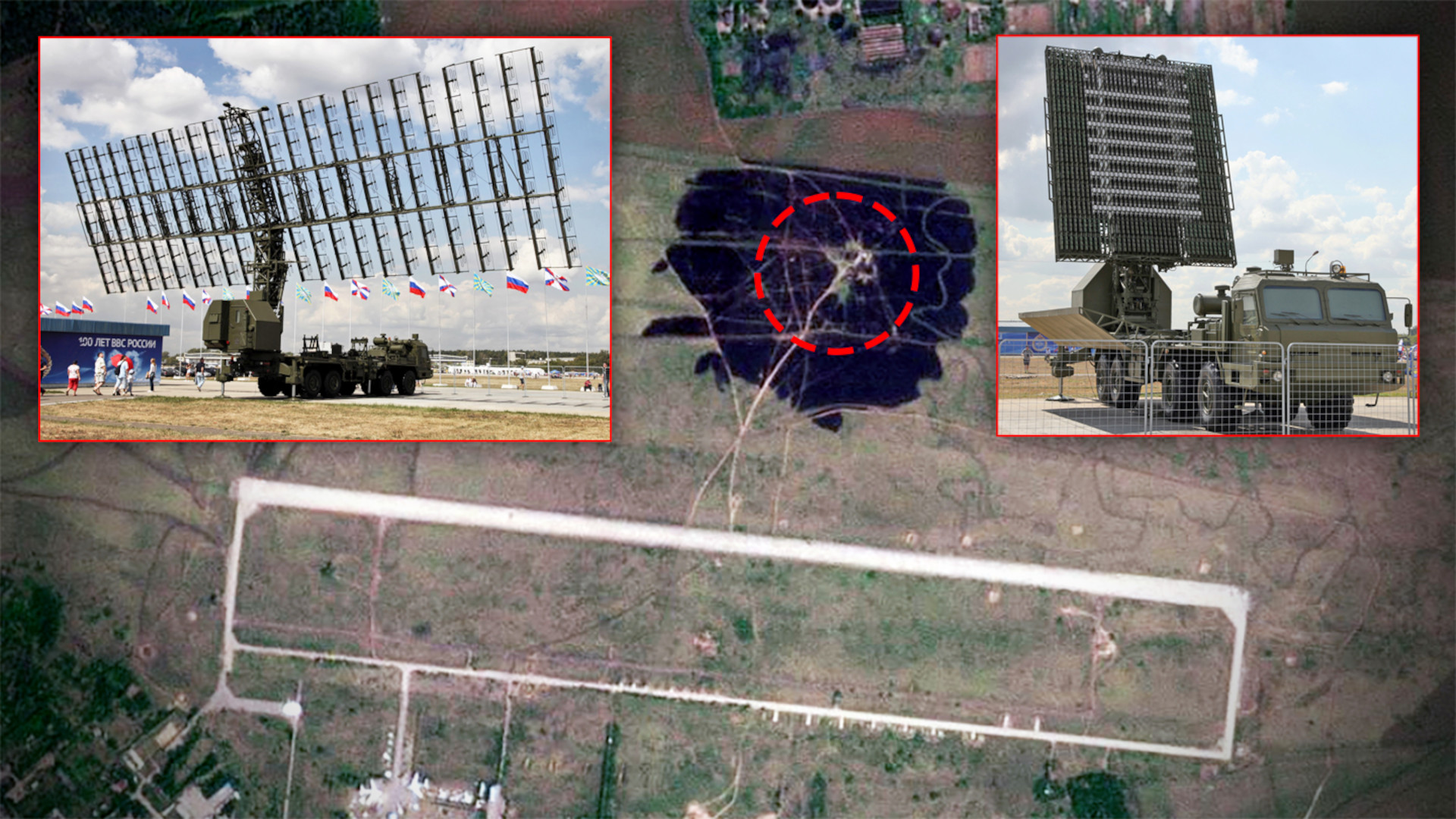Satellite imagery shows that a Ukrainian strike last night on an airfield near the capital of Ukraine’s eastern Luhansk region looks to have targeted an advanced Russian long-range radar system. The potential loss of elements of the Nebo-M radar system could have significant impacts on the ability of Russia’s forces to detect, track, and attempt to intercept various aerial threats, including ballistic missiles. To underscore the point, there are unconfirmed reports that U.S.-made Army Tactical Missile System (ATACMS) short-range ballistic missiles were used in the strike in the first place.
A satellite image The War Zone obtained from Planet Labs that was taken today shows an extensive area of burned vegetation to the north of the airstrip in Ukraine’s eastern Luhansk region. The airfield is among a number of facilities associated with a nearby aircraft repair plant and the former Luhansk Higher Military Aviation School. It’s also collocated with the Luhansk Aviation Technical Museum.

The burned area is in line with reports that the Ukrainian strike on the night of May 27 caused explosions and a major fire, and accompanying pictures and videos said to show that blaze. A video has also emerged that is said to have been taken on the ground at the airfield in the wake of the attack.
Analysis of earlier satellite imagery from Planet Labs of the same area north of the Luhansk aviation school airfield shows the presence of what appears to be elements of a Nebo-M radar system at least as of May 10. The exact extent of any damage the system may have sustained in the subsequent attack is unclear.

Nebo-M, the first example which only entered Russian service in 2017, is a multi-purpose long-range radar system. The manufacturer says it can detect targets out to a maximum range of nearly 373 miles (600 kilometers) and claims it has at least some capability to spot and track ballistic threats and even stealthy aircraft.
Radio Free Europe/Radio Liberty‘s Mark Krutov with help from our friend Evergreen Intel (@vcdgf555) on X has been able to identify what look to be RLM-M and RLM-D radar vehicles, specifically.


Also known as a Nebo-U, the RLM-M is a large, road-mobile 3D VHF target acquisition radar that is carried on an 8×8 truck, and reportedly has a unit cost of $100 million. The RLM-D, which is also carried on an 8×8 truck, is a similarly large L-band active electronically scanned array (AESA) air surveillance radar.
Krutov also noted that the video said to have been shot on the ground in the aftermath of the Ukrainian attack shows what looks to be a KU-RLK command vehicle.
The RLM-M and RLM-D can be set up to feed targeting data, via the central command post vehicle, to various air defense systems, including S-300 and S-400 surface-to-air missile systems.
It remains unclear what weapon or weapons may have been used to execute the strike targeting the Nebo-M system in Luhansk. As already noted, there are unconfirmed reports that U.S.-supplied ATACMS may have been involved, but no clear evidence of that is visible from the satellite imagery or has otherwise emerged. Ukrainian forces certainly have been using ATACMS, including a new tranche of longer-range versions obtained from the United States earlier this year, to target Russian air defense nodes and other high-value targets. Luhansk Airport, further to the south of where the Nebo-M was situated, was among the first places Ukrainian forces targeted after receiving their initial batch of ATACMS last year.
Seeking to neutralize the Nebo-M in Luhansk would make good sense for a variety of practical reasons. This could include helping to clear the way for future stand-off strikes involving ATACMS and other munitions like stealthy Storm Shadow and SCALP-EG air-launched cruise missiles supplied by the United Kingdom and France. Destroying such a prized system would have propaganda benefits, as well.
This is not the first time Ukrainian forces have reportedly targeted a Nebo-M. In April, the Kyiv Independent, citing an unnamed source, reported that Ukraine’s Security Service (SBU) had launched a kamikaze drone attack on another one of these radar systems in Russia’s Bryansk Oblast. Bryansk borders Ukraine to the north.
This also follows a spate of Ukrainian forces targeting Russian air defense systems and radars. This includes a first-of-its-kind strike strategic early warning radar that is part of Russia’s nuclear deterrent posture, which still has the potential to have further-reaching ramifications.
Whether or not more details emerge about the strike that looks to have targeted the Nebo-M in Luhasnk now remains to be seen.
Contact the author: joe@twz.com
